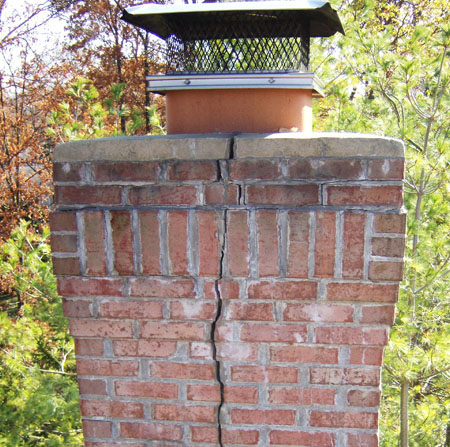Top 10 Home Defects
Licensed by both The State of New York and Connecticut.Top 10 Home Defects
People sometimes say to their home inspector, "You've probably seen it all when it comes to home and building defects." From a buyer's or seller's perspective, a home inspector's knowledge and experience might sometimes appear to be that complete. But in truth, no inspector has encountered every possible situation. And just when an inspector is developing that false level of self-assuredness, something new and surprising emerges in the course of an inspection.
Having personally inspected over 6,000 homes, I've discovered that no one ever sees it all. There's always some new surprise when you least expect it. However, I've also found that there are common types of property defects which rear their unsightly heads as often as the sun rises, not just in older homes, but often in brand new ones, even before the smell of the new paint has become a memory. So here is our top ten list of defects likely to appear in a home.

Accordion
Roofing Defects
Problems with roofing material, either due to aging and wear or to improper installation are likely to be found in the majority of homes. This does not mean that most roofs are in need of replacement, but rather that most are in need of some type of maintenance or repair.
Ceiling Stains, Indicating Past or Current Roof Leaks:
The problem here is that you often can't tell if the roof still leaks, unless it is inspected on a rainy day. Some stains are merely the residual effects of leaks that have been repaired. There is also the possibility that ceiling stains were caused by a former plumbing leak in the attic.
Water Intrusion:
Water intrusion into basements or crawlspaces due to ground water conditions: Such problems can be pervasive, difficult to resolve, and sometimes very damaging to buildings. Correction can be as simple as regrading the exterior grounds or adding roof gutters. Unfortunately, major drainage improvements are often the only practical solutions, requiring costly ground water systems such as French drains designed by experts such as geotechnical engineers.
Electrical Safety Hazards:
Electrical safety hazards, especially (but not always) in older homes: Examples are ungrounded outlets, lack of ground fault interrupters (shock protection devices), faulty wiring conditions in electrical panels or elsewhere in a building, etc. Such problems may be the result of errors at the time of construction, but very often they are due to wiring that was added or altered by persons other than qualified electricians.
Rotten Wood:
Rotted wood at building exteriors and at various plumbing fixtures: In places where wood stays wet for long periods, such as roof eaves, exterior trim, of decks, around tubs and showers, or below loose toilets, fungus infection is very likely to attack, resulting in a condition commonly known as dryrot. If left unchecked, damage can become quite extensive.
Additions and Alterations Were Constructed without Permits:
Homeowners will often tell a home inspector, "We added the garage without a permit, but it was all done to code." This statement is a red flag to most home inspectors, because no one could possibly know the entire building code, and the average person without professional involvement with the code is likely to know very little of it. Whenever an owner offers code assurance, I know that problems are likely to be found.
Unsafe Fireplace and Chimney Conditions:
These can range from lack of maintenance, such as neglecting to hire a chimney sweep, to faulty installation of fixtures. Most common among these are the lack of spark arrestors and substandard placement of wood-burning stoves. Free-standing fireplaces are typically installed by home owners and handymen, people without an adequate knowledge of fire safety requirements. The most common violations in these cases involve insufficient clearance between hot metal surfaces and combustible materials within the building. Fire hazards of this kind are often concealed in attics, where they remain undiscovered until a roof fire occurs.
Faulty Installation of Water Heaters:
In most localities, less than 5% of all water heaters are installed in full compliance with plumbing code requirements. Violations can include inadequate strapping, improperly installed overflow piping, unsafe flue conditions, or faulty gas piping. It should also be remembered that today's water heaters are designed to have shorter longevity than in times of yore. In fact, leaks can develop in units that are only five years old.
Hazardous Conditions Involving Gas Heaters:
Most gas-fueled heaters are in need of some maintenance, if only the changing of an air filter or a long-overdue review by the gas company. In some cases, however, gas heaters contain life-threatening defects that can remain undiscovered until too late. These can range from fire safety violations to the venting of carbon monoxide into the building. A cracked firebox, for example, can remain undiscovered unless found by an expert or until tragic consequences occur.
Firewall Violations In Garages:
Special fire-resistive construction is required for walls and doors that separate a garage from a dwelling. Violations are common, either due to faulty construction, damage or alterations to the garage interior, or changes in code requirements since the home was built. In older homes, where firewalls are not installed, sellers and agents will often say that the building predates the code. However, the fire separation requirement for residential garages dates back to 1927.









